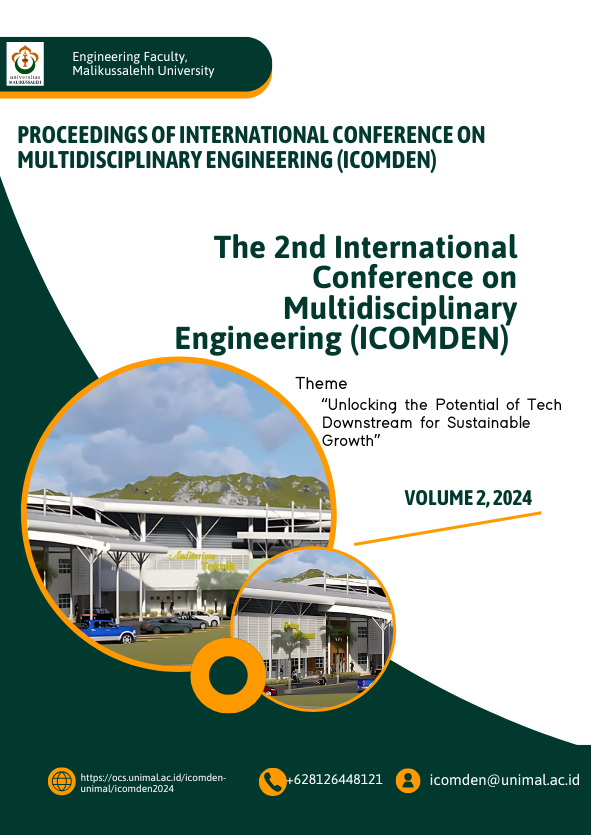Vita Activa On The Riverbanks Settlements of Aceh Tamiang: Critical Architecture Study
Keywords:
settlements, vita activa, labour, work, actionAbstract
The settlements along the Lintang River in Aceh Tamiang as the target objects of policy products are only oriented towards the physical housing and environment. Improving their quality of life is neglected because policy products do not side with them. The geographical location of their residence which is vulnerable to natural disasters such as flooding which occurs almost every year has made it difficult for them to leave the riverbank settlement environment. As an approach, a study is needed to be oriented towards their quality of life as a reference for policy products that support improving their quality of life. The literature used to reveal the quality of life of riverbank settlers uses the idea of vita activa which consists of labor, work, and action. Meanwhile, the analytical literature uses the idea of dialectics in the realm of critical architecture on the relationship between the form of riverbank settlements and the way the residents live. The study uses qualitative methods to reveal the phenomenon of residents living based on observations and information from residents as critical architectural analysis units. Based on the analysis results, it was found that they are a low-income society with labor on standard mental and intellectual consumption, work that prioritizes energy performance over intellectual performance and expertise, and action characterizes kinship like tribal society groups that view ties based on social status. The products of the settler's environmental policy will not be sustainable due to the limitations of the quality of life that prioritizes survival over maintaining life
References
Alex Callinicos. (2011). The Revolutionary Ideas of Karl Marx (2nd ed.). Haymarket Books.
Andrew Norris. (2013). On Public Action: Rhetoric, Opinion, and Glory in Hannah Arendt’s The Human Condition. Critical Horizons, 14(2), 200–224.
Anta Sastika, & Abdul Yasir. (2017). Karakteristik Permukiman di Tepian Sungai, Studi Kasus: Permukiman di Tepian Sungai Musi. Jurnal Arsitektur Dan Perkotaan KORIDOR, 8(2), 83–88.
Fuji Amalia, Listen Prima, Rizka Drastiani, & Sri Lilianti Komariah. (2023). Kajian Permukiman Kumuh Tepian Sungai Ditinjau dari Karakter Spasial Kawasan (Kelurahan Gandus Palembang). Archvisual: Jurnal Arsitektur Dan Perencanaan, 2(2), 85–92.
H. A. Kurniawan. (2019). Penggunaan Tanah Sempadan Sungai Untuk Bangunan di Desa Batursari Kecamatan Miranggen Kabupaten Demak.
Hadari Nawawi. (1991). Metode Penelitian Bidang Sosial. Gajah Mada University Press.
Hannah Arendt. (1998). The Human Condition (Margaret Canovan, Ed.; 2nd ed., Vol. 1). The University of Chicago Press.
Irzum Farihah. (2015). Filsafat Materialisme Karl Marx (Epistimologi Dialectical and Historical Materialism). FIKRAH: Jurnal Ilmu Aqidah Dan Studi Keagamaan, 3(2), 431–454.
Ivana Ivković. (2002). Fields of Human Life in Hannah Arendt’s “The Human Condition". Facta Universitatis: Philosophy, Sociology, Psychology and History, 2(9), 619–637.
J. Santoso. (2006). [Menyiasati] Kota tanpa Warga. Penerbit KPG dan Centropolis.
Jacqueline Tuwanakotta. (2024). Manusia-tindakan sebagai Manusia Politik: Sebuah Autentisitas dari Teori Politik Hannah Arendt. Jurnal Dekonstruksi, 10(1), 34–44. https://jurnaldekonstruksi.id/index.php/dekonstruksi/article/view/211/160
John Levi Martin. (2017). The Anthem Companion to Hannah Arendt (Peter Baehr & Philip Walsh, Eds.). Anthem Press.
John Torrance. (1995). Karl Marx’s Theory of Ideas (1st ed.). Maison des Sciences de I’Homme and Cambridge University Press.
Kurt H. Wolff. (1961). On the significance of Hannah Arendt’s the human condition for sociology. Inquiry, 4(1–4), 67–106.
Mayang, Deni, & Sisca Olivia. (2023). Karakteristik Hunian Bertinggal di Pinggiran Sungai Desa Kota Lintang Bawah, Aceh Tamiang. ETNIK: Jurnal Ekonomi-Teknik, 2(11), 1030–1039.
Murbaintoro T., Ma’arif, M. S., Sutjahjo, S. H., & Saleh, I. (2009). Model Pengembangan Hunian Vertikal Menuju Pembangunan Perumahan Berkelanjutan. Jurnal Permukiman, 4(2), 72–87.
Nanang Martono. (2016). Sosiologi Perubahan Sosial: Persepsi Klasik, Modern, Posmodern, dan Poskolonial (Edisi Revisi). RajaGrafindo Persada.
Noor Hamidah, R. Rijanta, Bakti Setiawan, & Muh. Aris Marfai. (2016). Analisis Permukiman Tepian Sungai Yang Berkelanjutan: Kasus Permukiman Tepian Sungai Kahayan Kota Palangkaraya. INERSIA, 12(1), 13–24.
Nurmaida Amri. (2013). Karakteristik Lingkungan Permukiman Kumuh Tepian Sungai Kecamatan Kolaka, Sulawesi Tenggara. Jupiter: Jurnal Penelitian Ilmu Dan Teknologi Komputer, 12(1), 1–10.
P. Walsh. (2011). The Human Condition as Social Ontology: Hannah Arendt on Society, Action and Knowledge. History of the Human Sciences, 24(2), 120–137.
Patchen Markell. (2011). Arendt’s Work: On the Architecture of “The Human Condition” . College Literature, 38(1), 15–44.
Robert B. Potter, & Sally Llyoid-Evans. (1998). The City in The Developing World. Longman.
Samsu. (2017). Metode Penelitian: Teori dan Aplikasi Penelitian Kualitatif, Kuantitatif, Mixed Methods, Serta Research & Development (In Rusmini, Ed.; 1st ed.). Diterbitkan oleh: Pusat Studi Agama dan Kemasyarakatan (PUSAKA).
Sergius Lay. (2024). Hannah Arendt: Pendidikan Dan Natalitas. Jurnal Riset Rumpun Agama Dan Filsafat (JURRAFI), 3(1), 237–250.
Sugiyono. (2013). Metode Penelitian Kuantitatif, Kualitatif dan R&D (19th ed.). Alfabeta.
Wiwit Heris. (2021, July 15). Sebab Akibat Permukiman Kumuh di Sempadan Sungai. Https://Www.Nawasis.Org/.
Downloads
Published
How to Cite
Issue
Section
License
Copyright (c) 2024 Rizky Kiky, Adi Safyan, Deni, Hendra A

This work is licensed under a Creative Commons Attribution-ShareAlike 4.0 International License.
Copyright Notice
Authors published in this journal agree to the following terms:
1. The copyright of each article is retained by the author (s).
2. The author grants the journal the first publication rights with the work simultaneously licensed under the Creative Commons Attribution License, allowing others to share the work with an acknowledgment of authorship and the initial publication in this journal.
3. Authors may enter into separate additional contractual agreements for the non-exclusive distribution of published journal versions of the work (for example, posting them to institutional repositories or publishing them in a book), with acknowledgment of their initial publication in this journal.
4. Authors are permitted and encouraged to post their work online (For example in the Institutional Repository or on their website) before and during the submission process, as this can lead to productive exchanges, as well as earlier and larger citations of published work.
5. Articles and all related material published are distributed under a Creative Commons Attribution-ShareAlike 4.0 International License.






